A little over a year ago, I was in the midst of a pretty spectacular – and sometimes challenging – adventure, which left quite an impact on me. I had the great fortune of traveling Namibia on a three week overland tour last September on one of Helen in Wonderlust’s Rock My Adventure Tours. It was an absolutely breathtaking and unforgettable experience in a country that has truly been blessed by a wild and very raw natural splendour that remains rather untouched. It was my first trip to an off-the-beaten path destination in quite a few years, and it was my first solo adventure (in the sense that I joined the tour as a solo traveler) in even longer. The trip was brilliant and I had a wonderful time. A year plus later, the impressions Namibia left on me continue to resonate.
If you take a look through Helen in Wonderlust’s blog or take the time to review all the pre-departure information she sends out when you sign up for one of her tours, you will notice that she often emphasizes that Africa can, in fact, get quite cold! This is something I was already aware of, having spent a winter (summer holiday for me) on a work experience program at a game reserve in South Africa years ago but, for some reason, as I was packing for my travels in Namibia, I didn’t quite consider just how cold it could get in the southern part of the country…as in, nearly freezing temperatures with the rare sprinkling of snow. And when you’re spending your nights camping, well, let’s just say that during that first week, while we spent our days in awe of the sheer scale of Fish River Canyon – the second largest canyon in the world after the Grand Canyon – and admiring the wild horses of Aus, I spent my nights blue-lipped in my tent, trying to decide whether it’d be preferable to breathe and let my face freeze off, or if suffocating curled up all the way inside my sleeping bag was the way to go…at least it was warm in there! Traveling Namibia was off to an interesting start.
As we started to venture north towards the ghost town of Kolmanskop – once a thriving diamond-mining community now succumbing to the encroaching sands of the desert – the temperature gradually increased, which I was eternally grateful for. Namibia is sometimes known as the “land of endless horizons” and this rings so very true! After Mongolia, it has the 2nd lowest population density in the world, which means that towns and cities are very spread out. The distances in Namibia are vast, and we often bumped along in our overland vehicle on (mostly) gravel roads – some in decent condition, some that probably shouldn’t have been classified as “roads” – for hours on end without seeing a soul, or even another vehicle. We did see a lot of zebra, though, and oryx, the national animal of Namibia. We quickly discovered that Namibian meals are very meat-oriented and it’s not uncommon to see these bush meats, along with eland and kudu, featured on restaurant menus. I confess that I did try zebra one evening for dinner and (don’t judge me) it was absolutely delicious! Having said that, after a few days of such a meat-heavy diet, I was seriously craving some fresh salad and veg, which was not that easy to come by. It made me wonder how a vegetarian or a vegan would fare in meat-crazy Namibia.
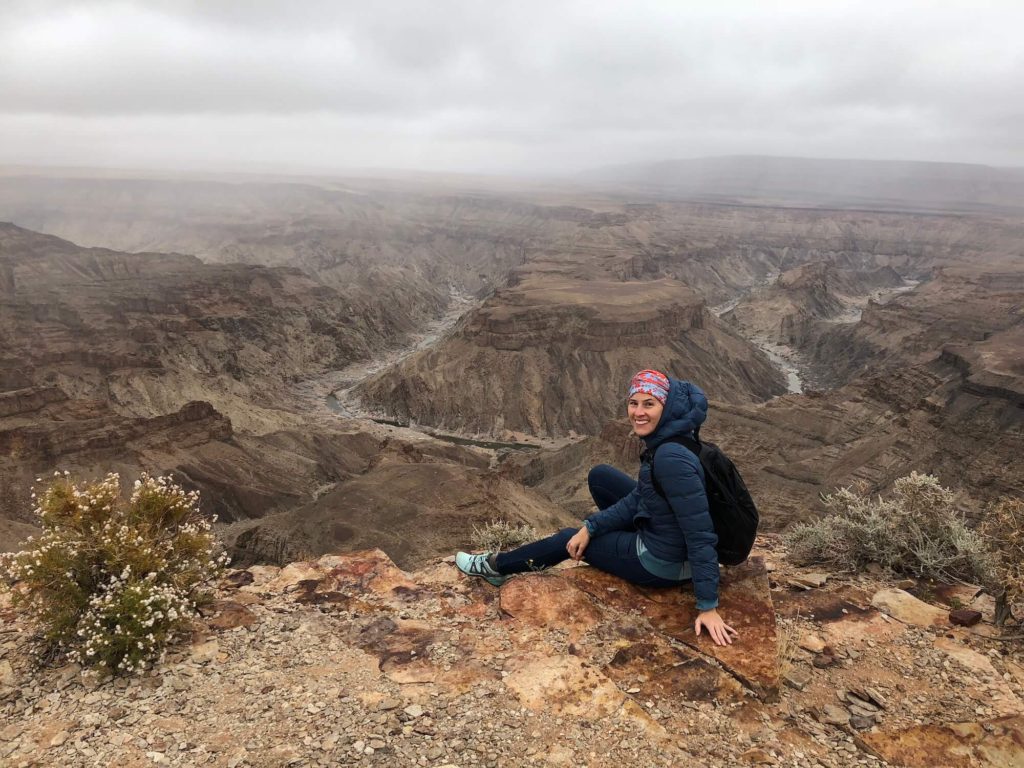
Freezing at Fish River Canyon
“And when I looked up at the sky, I would forget my discomfort and just marvel at the sheer jaw-dropping beauty of the night sky sprinkled with millions of stars, their brightness undiminished by any light pollution.”
The long traveling distances also meant that we had to make frequent pit stops at gas stations or rest stops, often in the middle of nowhere, to relieve ourselves. As primarily a desert country, Namibia is very dry and even with my concerted effort to drink at least 3 liters of water a day, I still felt parched inside and out…but more water meant more bathroom breaks. Considering how unpleasant most rest stop toilets tend to be (anywhere in the world, really), my expectations were that I would encounter waste-splattered drop toilets emanating a stench too revolting to contemplate but, Namibia pleasantly surprised me. Almost invariably, every public toilet we stopped at had at least one attendant that collected a small fee – we’re talking pennies – and by charging this small amount, Namibia manages to maintain some of the most pristine public toilets I have ever encountered…rivaling Japan, pristine. Maybe a practice all countries should consider adopting?
Of course, there were often times when toilets were just not available and we had to make do with the bush, or just hold it for the time being. Such was the case when we visited what might just be Namibia’s most famous sites; the giant red dunes of Sossusvlei and the neighboring Deadvlei with its iconic black, mummified trees. The dunes of the Namib desert – the oldest desert in the world – are some of the largest on the planet. A handful of them, like Big Daddy and Dune 7, are over 1000 feet high! Just massive piles of sand rising from the desert floor to tower above everything and everyone. We settled for a hike up the slightly more doable Dune 45, the most photographed dune in the world, which, at just shy of 300 feet, is still a challenging climb first thing in the morning… But what a worthwhile, truly magical and spiritual experience! Climbing these dunes at sunrise, as your feet sink into the fine red sand, filling up your shoes, and the rising rays start to illuminate the contrast of the orange dunes with the white salt and clay pans below, it’s just breathtaking and inspires a well of gratitude for the opportunity to witness so much natural splendour.
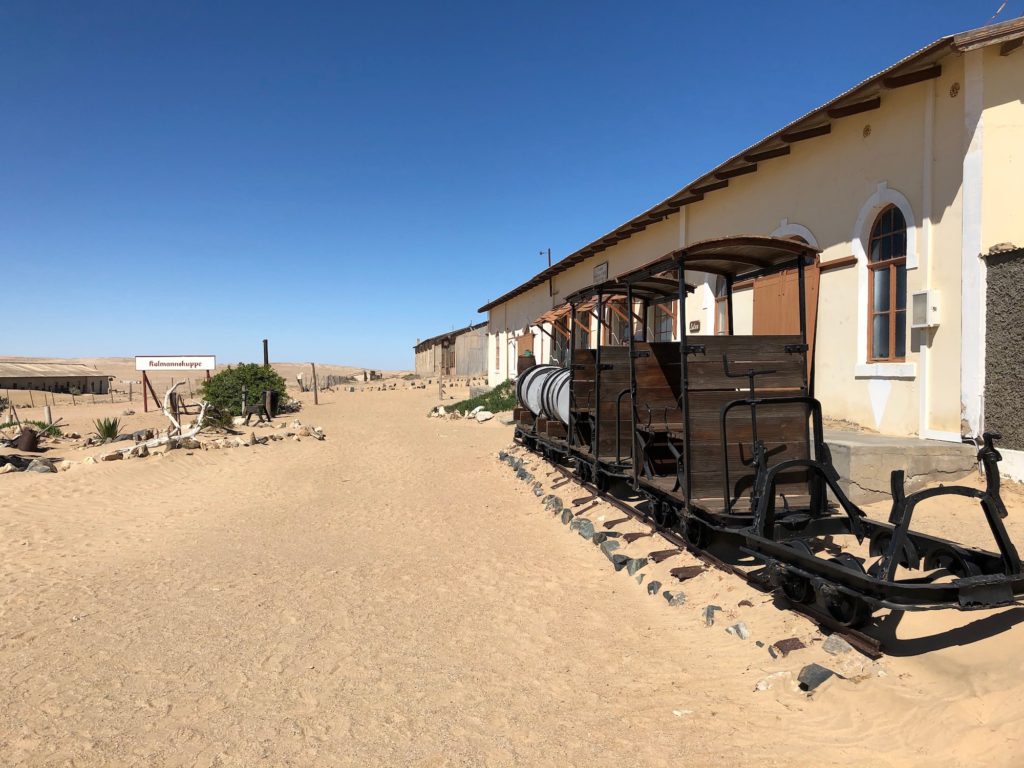
The ghost town of Kolmanskop, swallowed by the sands of the Namib Desert
When we ventured even further north later in our journey, traveling towards Namibia’s pride and joy, Etosha National Park, we stopped to spend a morning at a traditional Himba village. The Himba are an indigenous, pastoralist people living in Northern Namibia and they are considered to be the last semi-nomadic people in the region. They have managed to maintain their traditional way of life and distinct culture, although they are not isolated from Namibian society at large and do interact with other ethnic groups. While there, I was reminded of the red dunes of Sossusvlei at sunrise when we were invited to witness how a Himba woman applied a dark red cosmetic paste of butterfat and ochre to color her skin…the same color that the dunes had been just before the sun’s rays turned them into a bright, fiery orange. What a beautiful impression that left on me! She offered the paste for us women to try and, in my eagerness, I probably took too much to just spread across my forearm. I ended the day with a red arm, red hands and red smudges smeared all over my shirt, but even though I wasn’t fully able to get the color off my clothes until I returned home, it was a moment I’ll never forget…one of many such moments that traveling Namibia inspired.
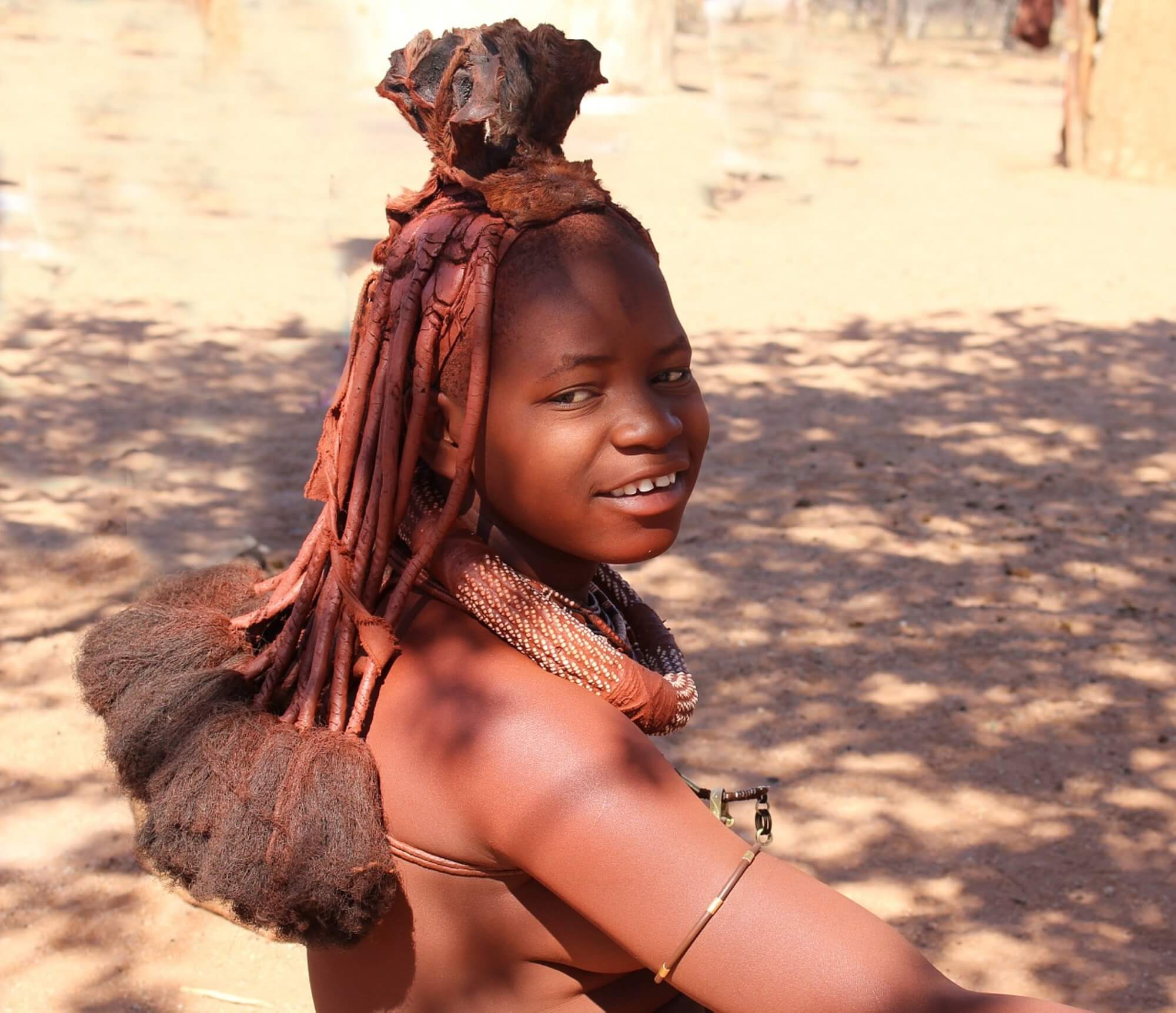
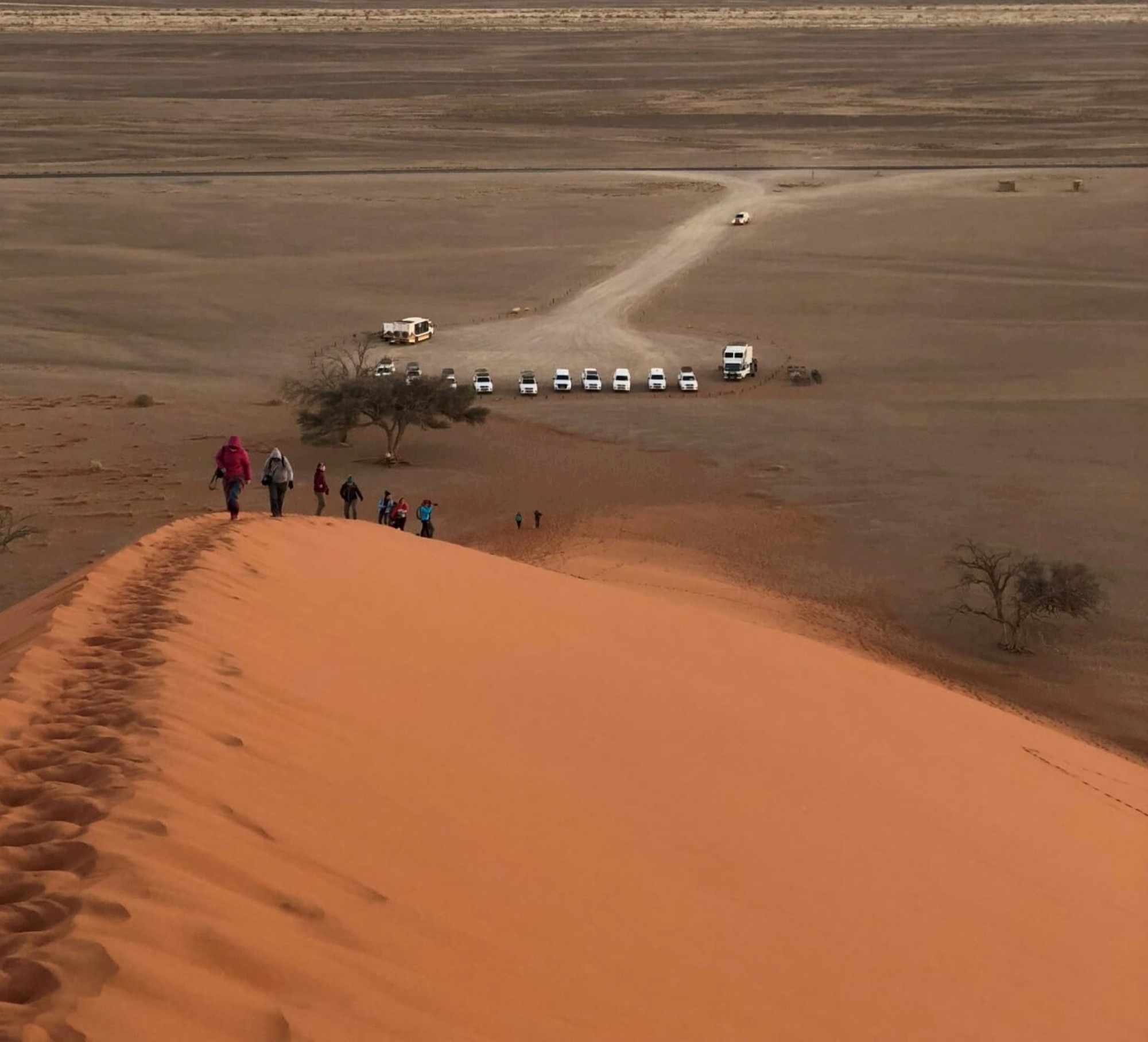
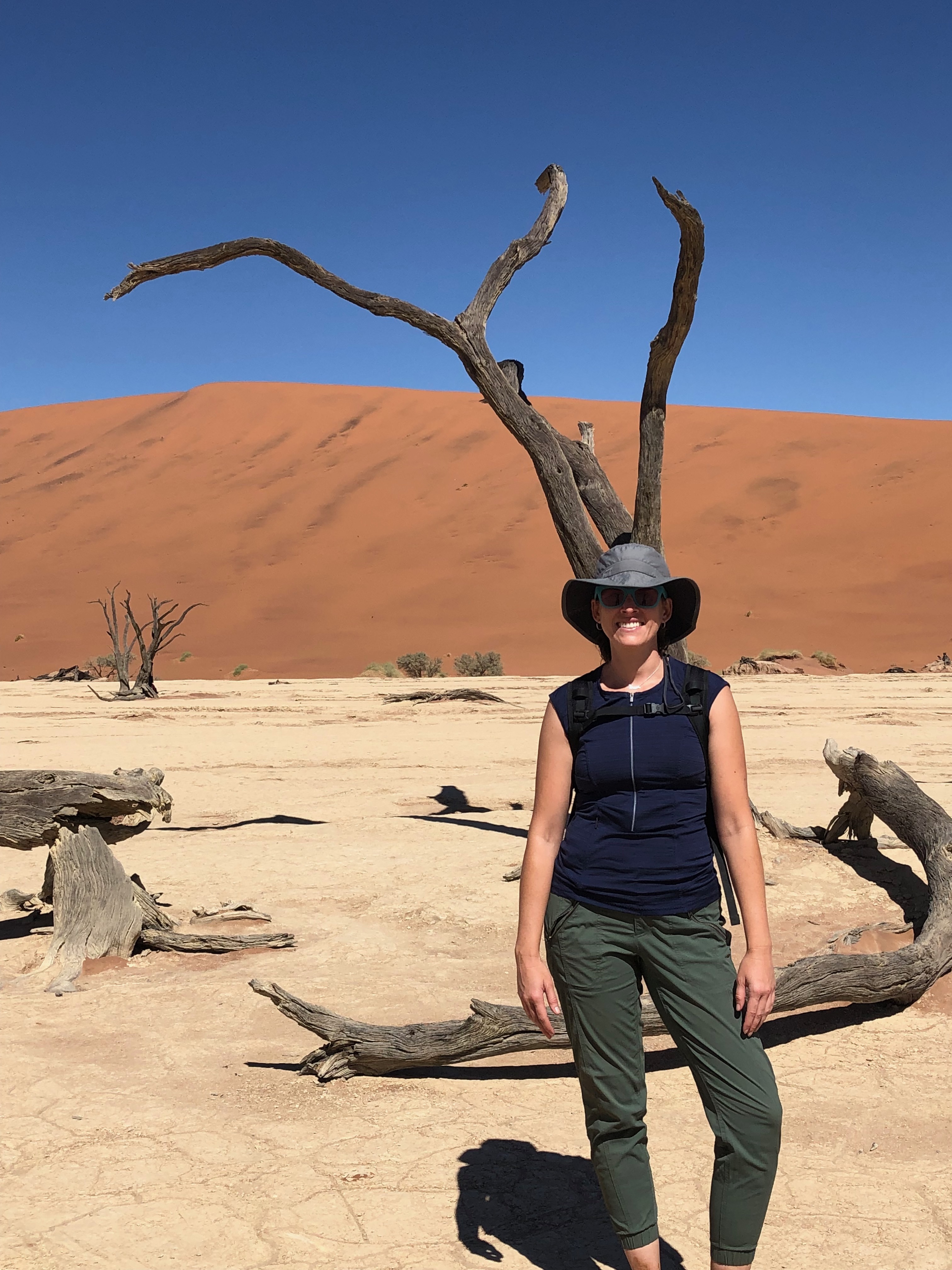
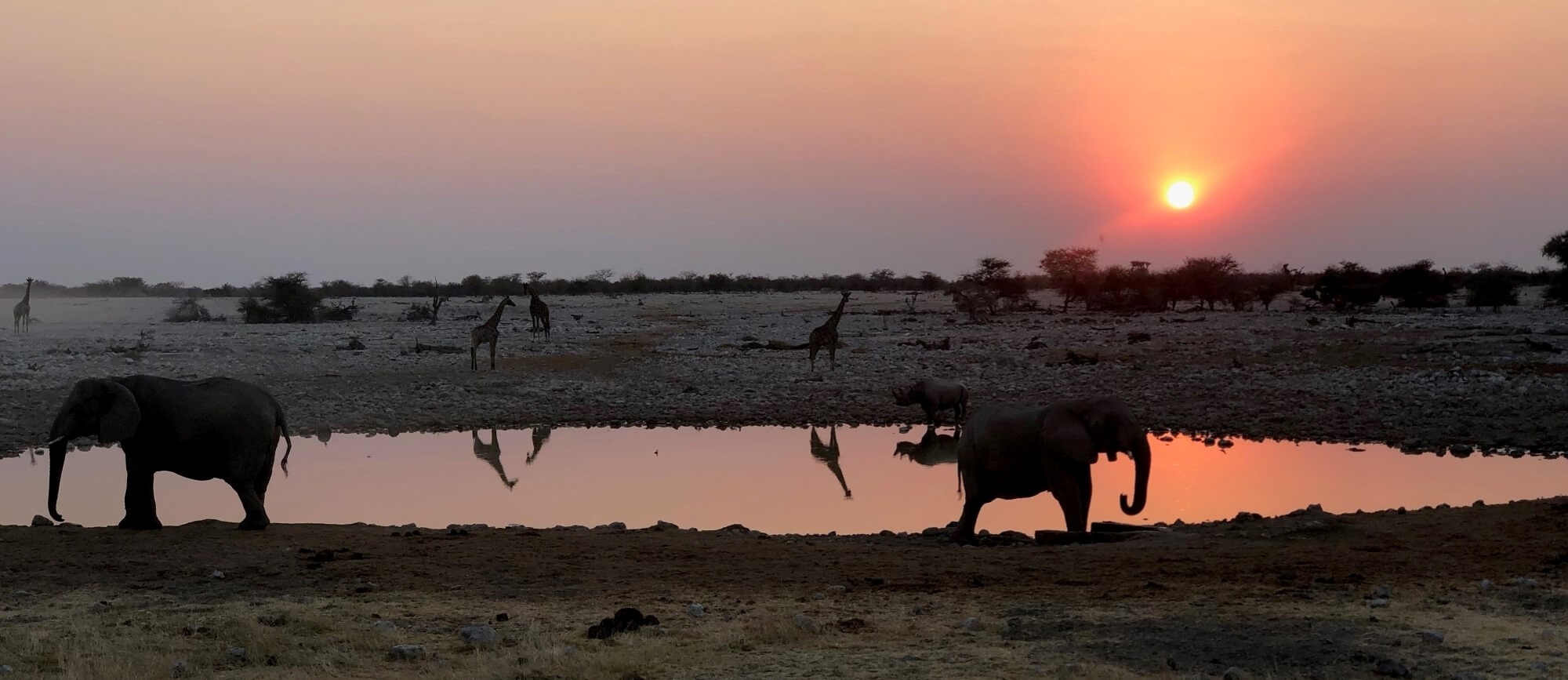
Actually, most of what I experienced while traveling Namibia, I’ll never forget… That fairytale moment when, while waiting at the overlook of a watering hole in our campground at Etosha, a herd of elephants unexpectedly emerged from the distance, gracefully filed in a very orderly fashion to the watering hole and proceeded to give us a show as they took turns drinking, playing and splashing while the rhinos, giraffes, zebras and coyotes patiently waited their turn. Pure magic! Even the cold nights when, freezing in my tent but having to use the toilet, I would emerge from the depths of my sleeping bag, take a deep breath (witnessing the fog of my exhale) and venture outside. And when I looked up at the sky, on my way to the toilet facilities of the current campsite, I would forget my discomfort and just marvel at the sheer jaw-dropping beauty of the night sky sprinkled with millions of stars, there brightness undiminished by any light pollution.
Namibia is a definite bucket-list destination. A raw, wild, rugged landscape, still emanating that off-the-beaten path vibe, dotted throughout with absolutely stunning natural sites and populated by wonderfully friendly, vibrant, warm people who are very proud of their country…and with good reason!
Written By Camila
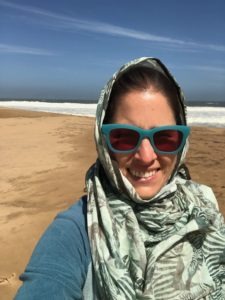
Seeker, Storyteller and Mindful Traveler

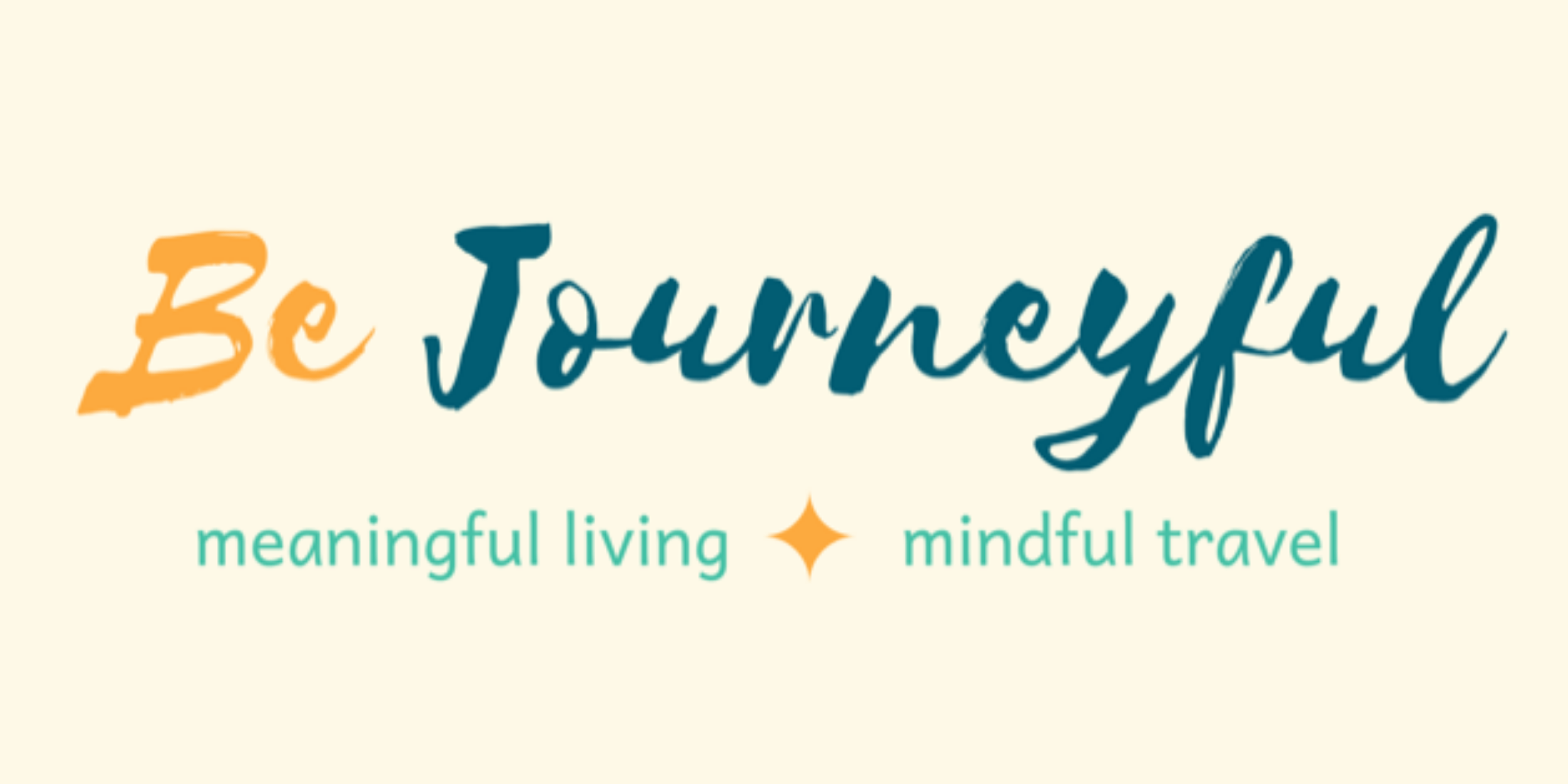

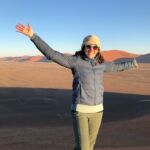

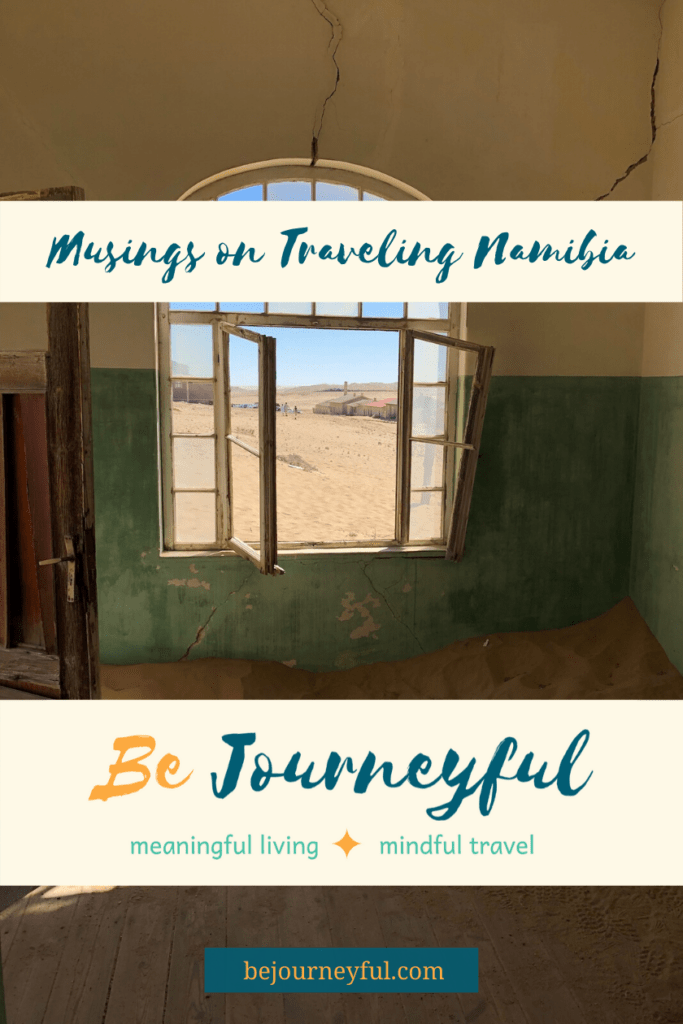
Recent Comments